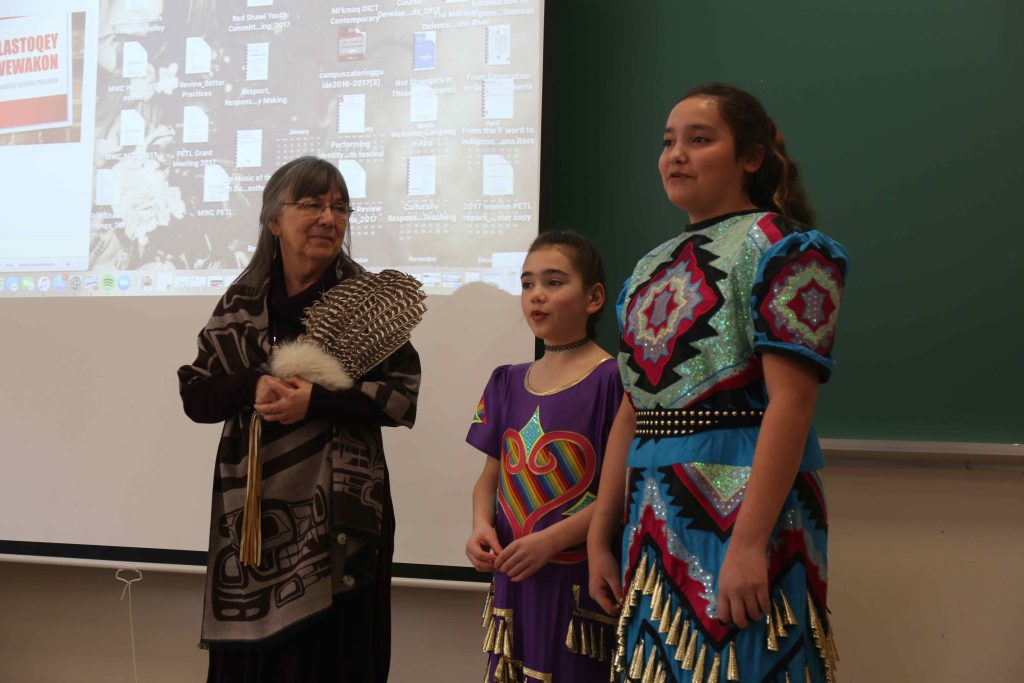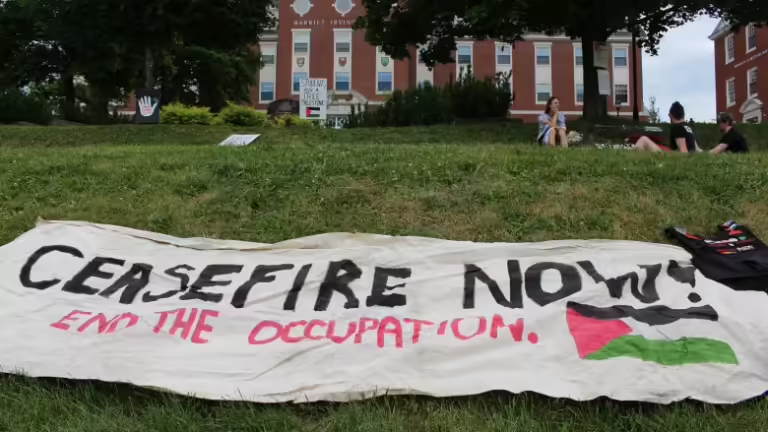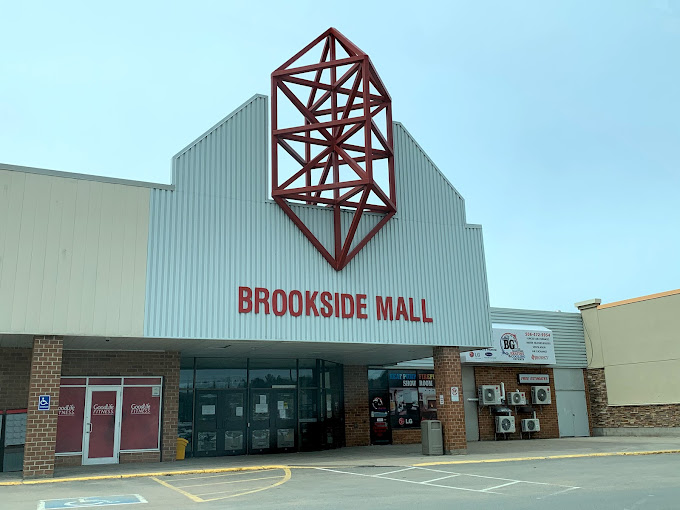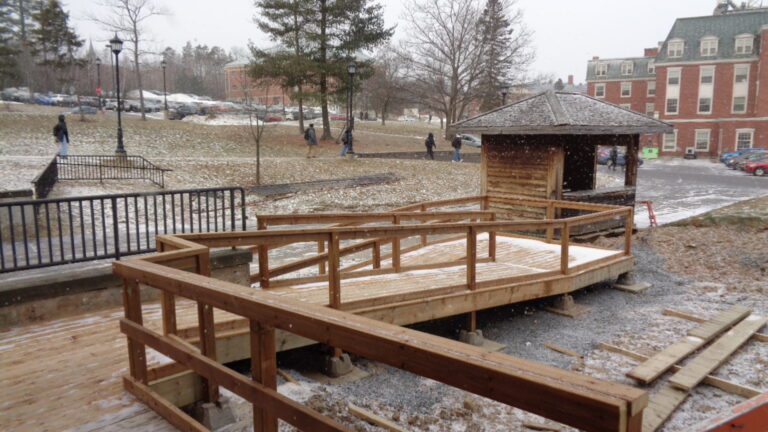Last Friday, the Mi’kmaq Wastoqey Centre (MWC) hosted the launch of a new Wolastoqey Latuwewakon App at Marshall d’Avray Hall.
David Perley, director of the MWC; Imelda Perley, UNB’s Elder-in-Residence; and Darrick Baxter, president of Ogoki Learning Inc. worked together to develop the app. The three received further assistance from Fredericton web developer Essential Studios and language students from Tobique and Kingsclear First Nations.
The launch featured words from the Perleys, Baxter, UNB vice-president academic George MacLean, UNB president Eddy Campbell and Oromocto First Nation councillor Allan Sabbatis-Atwin.
Two girls from St. Mary’s First Nation came in traditional jingle dresses to recite a prayer in Wolastoqey—which they are currently learning in school. Sisters of the Drum, also from St. Mary’s First Nation, came to sing at the event as well. A feast was held at the end of the launch in a celebration of the Wolastoqey language.
Saving the Wolastoqey language has been a priority for the Perleys for years
According to David, the idea for the app occurred around four years ago when UNB hosted the Atlantic Native Teacher Education Conference. It was there that he met Kevin Burton, director of Atlantic Canada’s First Nations help desk, who brought to his attention the approximately ten apps that had been developed for learning the Mi’kmaq language.
“It’s nice to have the Mi’kmaq language apps, but what about the Wolastoqey language apps? We don’t have any at all,” said David about his reaction to this news, prompting them to get to work on developing their own.
Burton connected the Perleys with Baxter, who began developing language apps for Indigenous communities after positive reception for the Ojibwe language app he’d made for his daughter.
Since then, his company has developed 49 apps for Indigenous language learning, nine of which have appeared on the front page of the Apple app store. Baxter first came to UNB two summers ago to train the four students the Perleys hired through Burton in assisting with development. The finished product is now available on both iPhone and Android devices.
Baxter said a special addition to this language app is illustrations from one of the students, Stephanie Perley. Her graphics have drawn the attention of Mi’kmaq app developers, who are now requesting she add something similar to theirs.
The app is called ‘Wolastoqey Latuwewakon,’ and users can begin learning the language by tapping the English word and hearing it repeated back to them in Wolastoqey. Imelda, who is a linguist as well as Elder-in-Residence, is the one enunciating the Wolastoqey words, which will be shown in a written format in a later update.
“When I started off my Linguistics degree, my elders didn’t want me to write the language down,” said Imelda, who explained how it was always a spoken language and not a written one.
“Their reasoning was that we lost everything that belongs to us. If you write it down, other people can learn it; it will be theirs not ours.”
Imelda said she embarked on a fasting ceremony in 1994 upon her teacher’s advice, to try and solve her inner conflict on how to move forward regarding their language.
“I realized I have to stand up for our language,” said Imelda—and since then she’s been working to revitalize the Wolastoqey language through writing it, speaking it and teaching it.
Sabbatis-Atwin was present to discuss the work he’s been doing with Imelda to implement a language revival program in his community; it launched in September.
“Our community has really come together to take initiative to learn the language. It’s really nice to see the resources that are available to us,” he said.
“I can feel that the positive energy in this room and the passion for the language. I want to challenge you all to not only come here to celebrate the language, but do an action that will take the spread of our language even further.”
The app’s launch provides an exciting new opportunity for Wolastoqey users to practice their language. Imelda noted she’s been contacted by many who wish to express their gratitude for its existence—including a Wolastoqiyik mother who feared she would lose her language when she moved to Ontario, but is now using the app to teach her children.
Non-Indigenous learners are encouraged to use the app too

Both Imelda and David made it clear during the launch that the app was intended for more than just the Wolastoqiyik. There’s currently a policy in New Brunswick where only Indigenous peoples can learn Indigenous languages in school, but they want that dispelled so everyone may do so.
Imelda noted they wanted to “offer [the language] as a gift,” as opposed to the forced learning that residential school survivors were subjected to.
“That’s honouring the true identity of New Brunswick society,” said David.
Imelda said the app’s overall goal was “to internally give you an identity—and for those of you who are non-Indigenous, to feel our identity in the words we share with you.”
MacLean and Campbell both spoke of how exciting it was to be present for the launch, and how thrilled they are to implement the university’s 10-point action plan to address the Truth and Reconciliation Committee’s calls to action, which was announced last week.
“This launch today of our language app is so exciting. I was so pleased to hear the Indigenous voice you’ll hear in this app is Imelda’s. She was joking before she was the Indigenous Siri,” said MacLean.
“It sounds like a learning tool, but also a tool that will be fun and engaging for all of us.”
UNB’s action plan includes plans to hire a full-time, university-wide Indigenous lead, who will oversee outreach to students, faculty and staff; the creation of more physical space for Indigenous learning on campus; and the set-up of an Indigenous Advisory Council, among other things.




